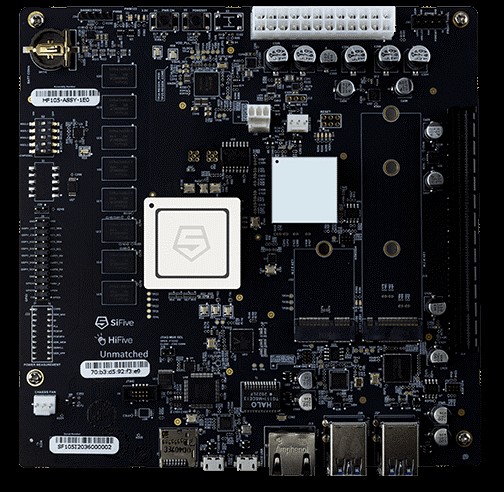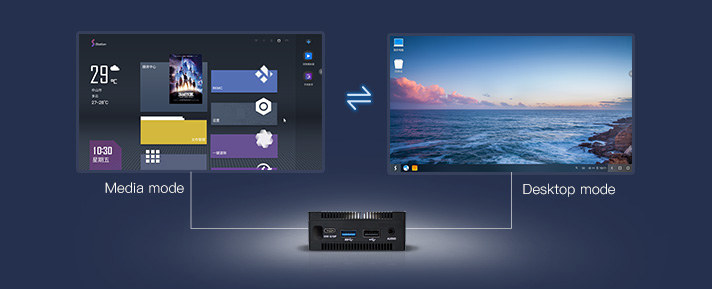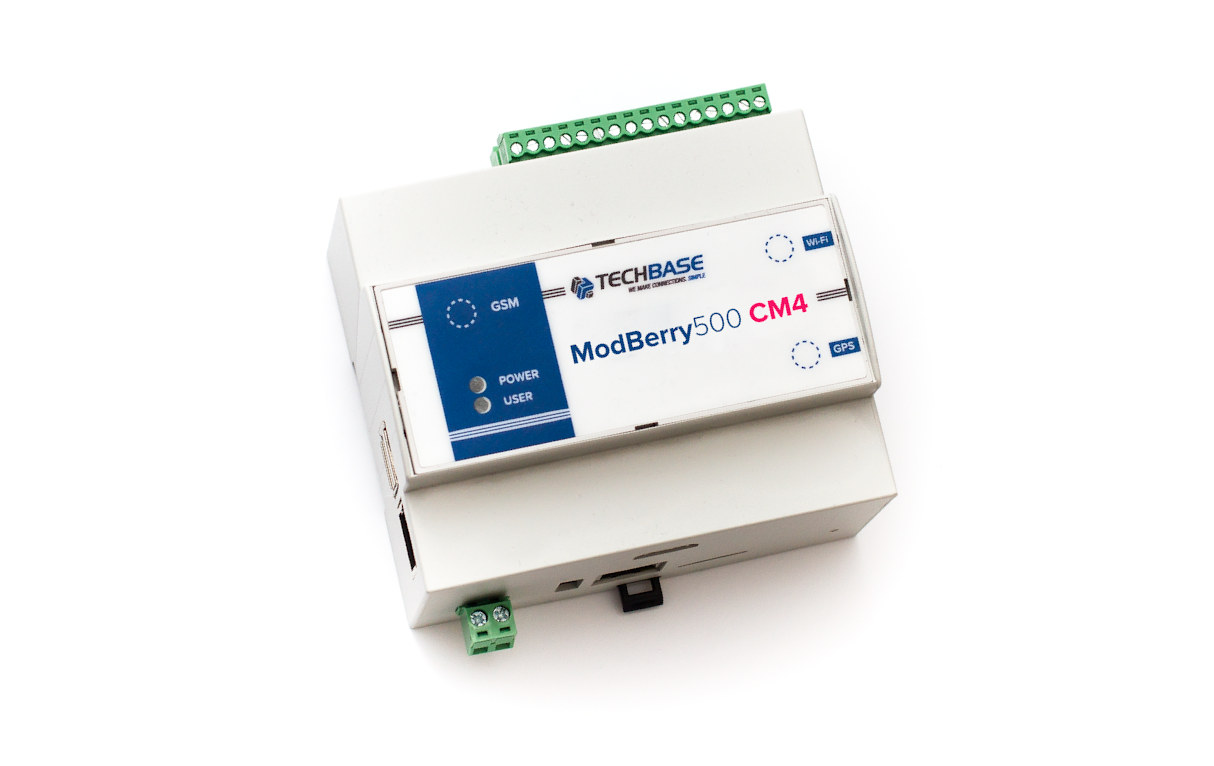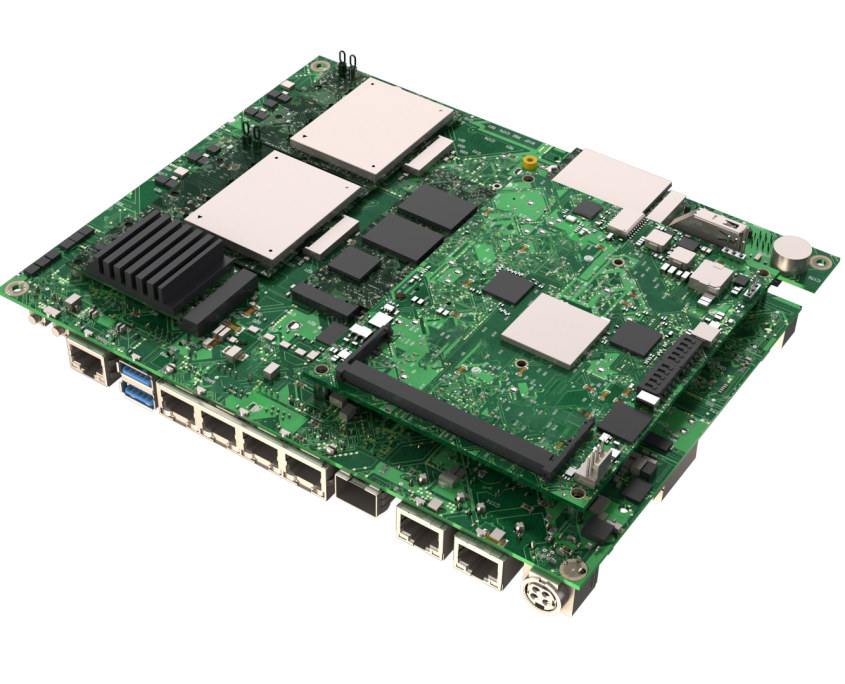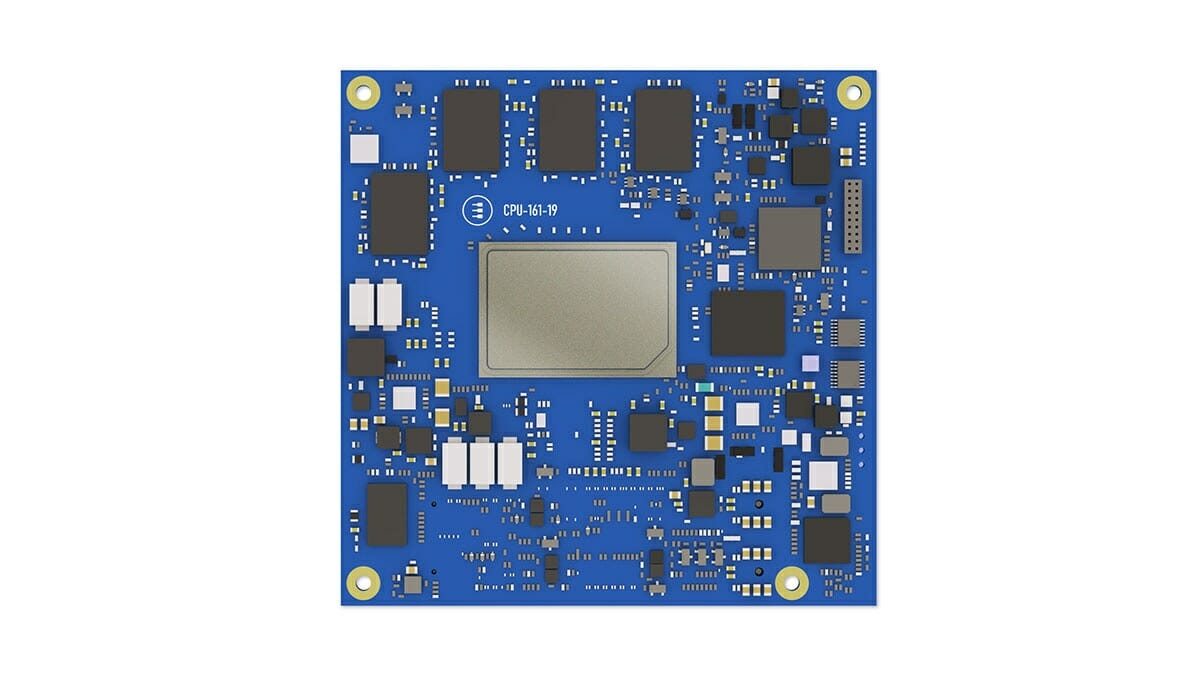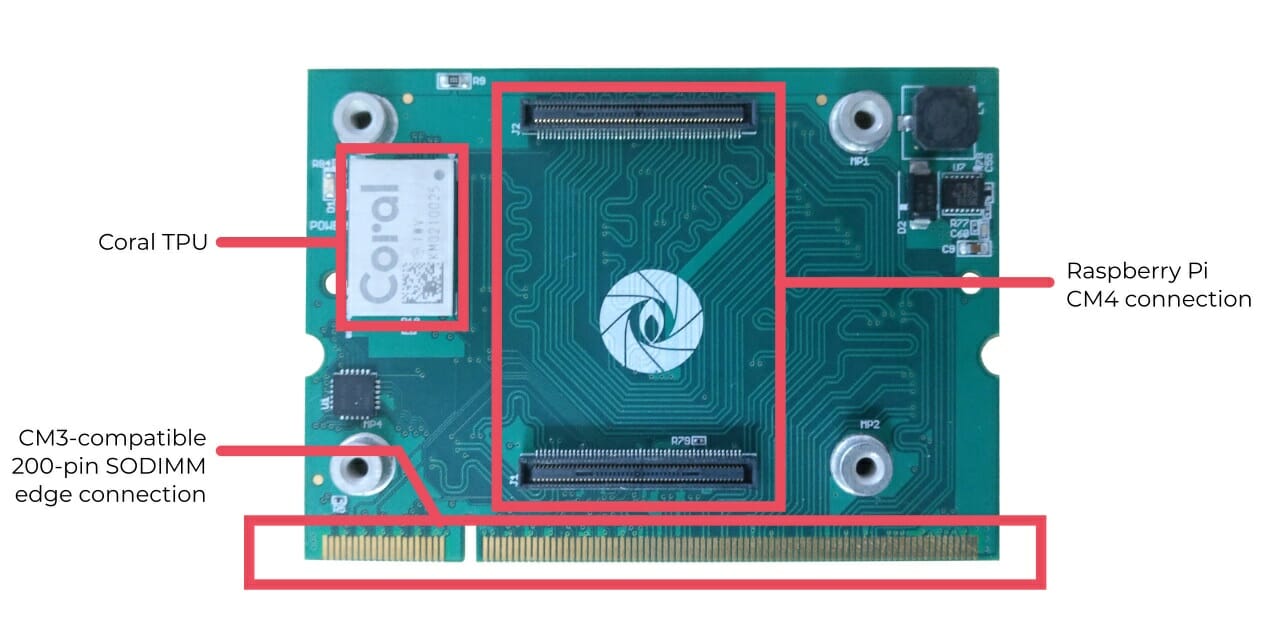When it comes to RISC-V based SoC, SiFive has always set a benchmark in the RISC-V ecosystem. On 29th October 2020, SiFive confirmed the first-ever RISC-V PC. After an increased demand for AI-focused RISC-V microarchitecture, targeting all applications from artificial intelligence, the internet of things, high-performance computing, and now even desktop PCs. SiFive Freedom U740 powered HiFive Unmatched mini-ITX motherboard comes with a complete development environment which allows developers to create RISC-V based applications from bare-metal to Linux-based systems. “HiFive Unmatched ushers in a new era of RISC-V Linux development with a platform in a PC form factor. Powered by the SiFive Freedom U740, a high-performance multi-core, 64-bit dual-issue, superscalar RISC-V processor.”, SiFive says. It is the world’s fastest native RISC-V development platform. SiFive HiFive Unmatched Board At the heart of the SiFive board is a SiFive FU740 processor coupled with 8 GB DDR4 memory and 32 MB SPI Flash. It […]
Station P1 & M1 fanless mini PCs run media or desktop-optimized Android OS
T-Chip has recently introduced two fanless “Geek” mini PCs under their Firefly brand with Station P1 & M1 respectively powered by Rockchip RK3399 hexa-core processor, and RK3328 quad-core processor. Both mini PCs can run Firefly’s Station OS in either desktop or media mode, as well as Android or Ubuntu. There are also some community efforts to port Armbian and LibreELEC to the devices. Station P1 specifications Specifications: SoC – Rockchip RK3399 hexa-core processor with two Cortex A72 cores @ up to 1.8 GHz and four Cortex-A53 cores, Mali-T860 MP4 GPU with support for OpenGL ES1.1/2.0/3.0/3.1, OpenVG1.1, OpenCL, DX11, VPU with support for 4K H.265 10-bit 60fps video decoding, multi-channel 1080p video decoding and encoding System Memory – 4GB LPDDR4 dual-channel 64-bit RAM Storage – 32GB eMMC flash (16GB/64GB/128GB Optional), onboard 16MB SPI flash, MicroSD card slot Video Output HDMI 2.0a up to 4Kp60, HDCP 1.4/2.2 DisplayPort 1.2 up to 4Kp60 […]
Qualcomm QCS610 micro SoM and devkit to power AI and ML smart cameras
Last July, we missed Qualcomm’s announcement of QCS410 and QCS610 processors designed to bring “premium camera technology, including powerful artificial intelligence and machine learning features formerly only available to high-end devices, into mid-tier camera segments”. The new SoC’s were recently brought to our attention by Lantronix as they have just introduced a new Open-Q 610 micro system-on-module (μSOM) based on Qualcomm QCS610 processor, as well as a development kit designed to bring such smart cameras to market. I first got a bit confused by the product name, but this goes without saying that it is completely unrelated to Qualcomm Snapdragon 610 announced over six years ago. Open-Q 610 micro system-on-module Open-Q 610 specifications: SoC – Qualcomm QCS610 CPU – Octa-core processor with 2x Kryo 460 Gold cores @ 2.2 GHz (Cortex-A76 class), and 6x Kryo 430 Silver low-power cores @ 1.8GHz (Cortex-A55 class) GPU – Qualcomm Adreno 612 GPU @ […]
Modberry 500 CM4 DIN Rail Industrial Computer Features Raspberry Pi Compute Module 4
We’ve been writing about Techbase Modberry industrial embedded computers with DIN-Rail enclosures such as Modberry M500 or M2000 for several years. Most of their systems are powered by SBC’s like Raspberry Pi 4 or AAEON Up Squared, but they’ve also made models based on Raspberry Pi Compute Module 3+, and with the launch of Raspberry Pi CM4, the company has now introduced Modberry 500 CM4 industrial computer powered by Raspberry Pi Compute Module 4 with up to 8GB RAM and 32GB eMMC flash. Modberry 500 CM4 key features and specifications: SoM – Raspberry Pi Compute Module 4 with Broadcom BCM2711 quad-core Cortex-A72 processor @ 1.5 GHz, 1 to 8GB RAM, up to 32GB eMMC flash. Storage – Optional NVMe SSD via PCIe 2.0 (mini PCIe or optional M.2 slot) Video Output – Optional HDMI port Connectivity Optional Gigabit Ethernet port Optional Wi-Fi (IEEE 802.11 b/g/n/ac) & Bluetooth 5.0 Optional 5G, […]
ClearFog CX CN9K Mini-ITX 10GbE/5GbE networking SBC runs Linux or FreeBSD
Last year, SolidRun introduced ClearFog CX LX2X networking single board computer offering up to 100GbE via NXP LX2160A 16-core Cortex-A72 communication processor that followed ClearFog CX 8K ARMADA 8040 networking board launched the year before. The Israeli company is now working on two ClearFog CX CN9K networking SBC’s powered by CEx7 CN913x system-on-module featuring Marvell Octeon TX2 CN913x quad-core Cortex-A72 processor and offering multi-gigabit Ethernet with various 10Gbps, 5Gbps, and Gigabit Ethernet ports. ClearFog CN9132 Pro The higher-end version of the ClearFog CX CN9K boards is ClearFog CN9132 Pro with the following specifications: CEx7 CN9132 COM Express Type 7 module SoC – Marvell OCTEON TX2 CN9132 quad-core Arm Cortex A72 up to 2.2 GHz (Industrial temperature up to 2.0 GHz) System Memory – Up to 16GB SO-DIMM DDR4 up to2400MT/s (not included by default) Storage – Up to 32 GB eMMC flash, SPI NOR flash COM Express Type 7 board-to-board […]
Intel Elkhart Lake COM’s offer up to 3x 2.5GbE, SIL2 functional safety
Since the launch of the Intel Elkhart Lake IoT Edge processor family, we’ve covered several COM Express modules based on the new low power SoCs including TQ Embedded TQMxE40C1/C2 and Congatec conga-MA7 & conga-TCA7. But despite the processor supporting 2.5GbE, all the computers-on-module we’ve covered so far would only offer Gigabit Ethernet connectivity. But Eurotech CPU-161-19 and CPU-161-20 COM Express Compact Type 6 modules support up to three 2.5 Gbps Ethernet interfaces using COM Express with proprietary expansions, and CPU-161-20 is the first module we’ve seen taking advantage of Intel Atom x6000FE parts with Functional Safety (FuSa) support making the module certifiable with SIL2 Safety Integrity Level (IEC 61508-2:2010) and/or Cat 3 PL=d (ISO 13849-1). As we may infer from the photos above and below, both modules share many of the same features, except for the added functional safety on CPU-161-20. CPU-161-19/20 specifications: SoC CPU-161-19 module Atom x6212RE dual-core processor @ […]
How to develop Gstreamer-based video conferencing apps for RDK & Linux set-top boxes
CNXSoft: This is a guest post by Promwad that explains the basic steps to develop a video conferencing app with Gstreamer on TV boxes running Linux. The COVID-19 pandemic has become a catalyst for new online services. For example, Zoom became so successful that it overtook IBM in terms of capitalization this month. The software engineers at Promwad were inspired by this success and decided to go even further: what about implementing video conferencing on Smart TV and STBs? Then the users of such an application will have an opportunity to communicate not only at work but also to enjoy remote meetings with friends, cheer for a soccer team, watch a movie together, or do sports with a coach. For some reason, most digital TV operators do not have such a service, although, from an engineering point of view, all these features can be implemented on set-top boxes based on […]
Gumstix Introduces CM4 to CM3 Adapter, Carrier Boards for Raspberry Pi Compute Module 4
Raspberry Pi Trading has just launched 32 different models of Raspberry Pi CM4 and CM4Lite systems-on-module, as well as the “IO board” carrier board. But the company has also worked with third-parties, and Gumstix, an Altium company, has unveiled four different carrier boards for the Raspberry Pi Compute Module 4, as well as a convenient CM4 to CM3 adapter board that enables the use of Raspberry Pi CM4 on all/most carrier boards for the Compute Module 3/3+. Raspberry Pi CM4 Uprev & UprevAI CM3 adapter board Gumstix Raspberry Pi CM4 Uprev follows the Raspberry Pi Compute Module 3 form factor but includes two Hirose connectors for Computer Module 4. The signals are simply routed from the Hirose connectors to the 200-pin SODIMM edge connector used with CM3. Gumstix Raspberry Pi CM4 Uprev is the same except it adds a Google Coral accelerator module. Gumstix Raspberry Pi CM4 Development Board Specifications: […]


